Apr 3, 2013 | News & Events

Vokera launches combi range ‘Unica i’ with impressive green credentials
Vokera has launched the Unica i range of combi boilers. The range has impressive green credentials for energy-conscious homeowners, and has been designed with ease of installation in mind.
Packed with features to maximise energy savings, the Unica i28, Unica i32 and Unica i36 have a modulation ratio of 10:1. This exceptionally high, class-leading modulation ratio improves energy efficiency by reducing the frequency of on/off cycling, while also minimising unnecessary wear and tear on boiler components and ensuring a stable DHW flow temperature. Furthermore, by having an extremely low minimum output e.g. i28 has a minimum output of 2.8kW, it becomes an extremely attractive solution for new-build properties, where the requirements for space-heating are much lower.
To further improve Unica i’s green credentials, the range incorporates intelligent energy saving software such as weather compensation and OpenTherm. This built-in functionality – when combined with a suitable Vokera control – enables further significant fuel efficiency saving up to £67 a year, whilst optimising end-user comfort. The Vokera OpenTherm control offers exceptional ease for the installer, with a simple plug and play connection, eliminating the need for a Part P qualified electrician to install.
In addition to its energy saving features, the Unica i has many other selling points for homeowners. A large DHW heat exchanger ensures the fast delivery of hot water, while the inclusion of a DHW flow meter (instead of a flow switch) allows for greater temperature stability to maximise end user comfort. The Unica i range also boasts an LCD backlit display to improve the boiler’s user interface panel, plus an outstanding five-year warranty for added peace of mind.
The new Unica i range of boilers is very installer-friendly too. Installation is made simple and straightforward with a rear flue option on all outputs and a newly designed fixing jig that can be removed once the pipework has been fabricated. This improves manoeuvrability once the boiler is placed on the wall, and is especially beneficial if wall surfaces are uneven.
The superior Riello heat exchanger is also front-facing, making maintenance much simpler.
Eleanor Fox, marketing director at Vokera, said: “With energy prices on the up, homeowners are looking at ways to reduce the amount of gas and electricity they use in the home. One way they can do this is to make sure that their heating and hot water system is as efficient as it can be. With this in mind, we have developed the Unica i range to fulfil the need for domestic combi boilers that feature lots of different ways to reduce energy usage, without compromising on performance.”
Having a NOx emission rating of below 40mg means that the Unica i surpass’ Nox Class 5 and enables maximum credit under the ‘Code for Sustainable Homes’. The Unica i features Vokera’s unique Autostop function as standard; this is of significant benefit for social housing and private landlords, Autostop will, once activated, notify a tenant that action is required a month before their annual gas safety check is due.
For further information click here for the Unica i web page and literature
Nov 12, 2012 | News & Events
Vokèra is supporting the Heating and Hotwater Industry Council’s Hole in the Roof campaign. Launching today, November 12 2012 its purpose is to raise the awareness of energy efficiency by getting people to take action and make a change in their homes that could result in financial savings.
Hole in the Roof would like consumers to change their behaviour and stop wasting energy that is metaphorically disappearing through the roof as well as depleting the pocket. Consumers can view the Hole in the Roof website and click on any technology or heating system measure to find out what change could suit them best. This can be a simple measure like draft proofing, putting a balloon up your chimney, radiator reflectors or installing a renewable technology.
The website has a 2D house where consumers can click on various heating technologies in the house such as thermostats, solar thermal, showers, heat pumps, controls and other measures. This user friendly website will enable the public to find out more about how they can save energy and become more energy efficient. Human behaviour is one of the hardest things to change and we want people to become more aware of their actions but not preach to them and also appeal to all publics not just the green community. At the end of the day, energy costs keep rising and will hit many pockets hard as winter approaches, we need people to realise that they need to prevent money from literally disappearing through the roof.
Hole in the Roof is supported by leading environmentalist, Tony Juniper, BBC’s DIY SOS Charlie Luxton, financial expert, Jasmine Birtles and Director General of Saga, Dr Ros Altmann.
Roger Webb, HHIC Director said: “The Hole in the Roof campaign is all about making simple changes in the home in order to make your environment more energy efficient. We have some well-respected supporters from a variety of fields who all support us in our aim to raise the importance of energy efficiency. We want people to become enthused about changing their behaviour to sign up to the fact that as a collective whole we can make a difference. We can’t force people to change their behaviour but we can try to tap into the reasons they might want to. The Hole in the Roof campaign provides a fun and interactive website and a humorous animation to watch called: The Romans all to help kick-start action.”
For further information please contact Jodie Wiltshire on 01926 513743 or email [email protected] Please visit our Hole in the Roof website at www.holeintheroof.org.uk Like us on Face book, and tweet us on Twitter as well as watching our fantastic animation called The Romans on YouTube.
Sep 1, 2012 | News & Events
Boiler manufacturer Vokèra has launched the Vision range of combi and system boilers. Designed to be installer-friendly and feature-rich, benefits include a rear flue option, a five-year warranty*, a built-in seven-day digital clock**, low NOx emissions and a light 26kg lift weight.
Suitable for a range of applications, the combi Vision includes 25C and 30C options and the system version is available in 20S and 25S options. Weighing just 25kg and 26kg respectively, the Vision system and combi boilers are easy for installers to lift and fit into small spaces, such as a kitchen cupboard. Further to this, the rear flue option adds to the ease of installation and gives multiple siting possibilities.
The added bonus of a built-in seven-day digital clock allows homeowners to programme bespoke heating functions per day, offering maximum flexibility. In addition, homeowners can expect a flow rate of 12 l/pm***. With the Vision’s NOx emissions being as low as 21mg/kWh, it is an ideal choice for social housing applications and can contribute towards achieving level 4 of the Code for Sustainable Homes.
Steve Cipriano, managing director of Vokèra, comments: “Our goal with the new Vision boiler was to create an installer-friendly, feature-rich product that would surpass other domestic boilers in technology, design, ease of installation and reliability.
“We seek to further enhance our already impressive range of products and continue to listen to the needs of our customers. In light of this, and to celebrate the launch, we are offering installers a five-year warranty on the Vision, if purchased before December 31 2012.”
To coincide with the launch, Vokèra is giving away a variety of rewards including football shirts, stadium tours and computer games to Affinity members purchasing their first Vision combi and/or their first Vision system boiler between July 1 and October 31 2012.
For further information on the Vision boiler and all of the products in Vokèra’s extensive range, call 0844 391 0999.
*Valid on Vision boilers purchased before December 31 2012.
**Vision combi only
*** Vision combi only at a 35ºC rise
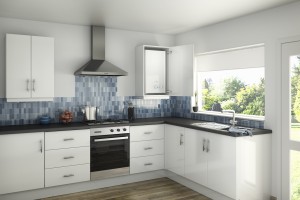 |
 |
Sep 1, 2012 | News & Events
We are proud to be supporting Gas Safety Week taking place 10th -16th September 2012
Gas Safety Week is co-ordinated by Gas Safe Register, the official list of gas engineers who are legally allowed to work on your gas boiler, gas cooker and gas fire. Gas Safety Week aims to raise awareness of gas safety and the importance of taking care of your gas appliances. It is a national campaign with events, advertising and PR taking place across the country to help keep the nation Gas Safe.
Badly fitted and poorly serviced gas appliances can cause gas leaks, fires, explosions and carbon monoxide poisoning. Every year thousands of people across the UK are diagnosed with carbon monoxide poisoning. It is a highly poisonous gas. You can’t see it, taste it or smell it, but it can kill quickly with no warning.
By taking care of your gas appliances properly you are taking care of your home and your loved ones. Follow these top tips to help keep you and your family gas safe:
- Make sure only a Gas Safe registered engineer works on your gas appliances. Illegal gas fitters can put your life at risk
- Always check the engineer’s Gas Safe Register ID card
- Make sure gas appliances have a regular service and a gas safety check every 12 months
- Look out for warning signs that your gas appliances aren’t working correctly e.g. lazy yellow or orange flames instead of crisp blue ones, black marks on or around the appliance and too much condensation in the room
- Know the signs and symptoms of carbon monoxide poisoning – headaches, dizziness, breathlessness, nausea, collapse and loss of consciousness
- Install an audible carbon monoxide alarm
- If you smell gas call the gas emergency number on 0800 111 999
For gas safety advice or to find and check an engineer visit the Gas Safe Register website at www.GasSafeRegister.co.uk. Alternatively call the free helpline on 0800 408 5500.
Feb 17, 2012 | News & Events
Boilers with wide modulation ratios can improve efficiencies and comfort while reducing wear and tear on components – but what does the term mean, and how can installers explain it, and its benefits, to end users? Here Alister Maclachlan, product director at Vokèra, provides some advice following the launch of Vokèra’s Linea One boiler that boasts a modulation ratio of 10 : 1.
In recent years some boiler manufactures have started to talk about modulation ratios – but what does the term mean and, more importantly, how does the end user benefit?
In simple terms, the modulation ratio is a boiler’s ability to reduce its maximum output to its minimum output. A narrow modulation range gives a poor ratio whereas a wide range provides a good ratio. For example, if a boiler has a maximum output of 30kW and a minimum output of 7.7kW its modulation ratio is less than 4:1. Meanwhile, a boiler with a maximum output of 30kW and a minimum output of 3kW has a wider (hence better) modulation ratio of 10:1. As a general rule, for a boiler to be classed as having a ‘good’ modulation ratio its minimum output should be one fifth or one sixth of its maximum output.
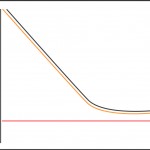
High Modulation Ratio Ignition Sequence
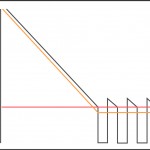
Low Modulation Ratio Ignition Sequence
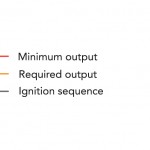
There are two important reasons why a good boiler modulation ratio is preferable – and understanding these reasons can help installers explain the benefits to end users.
Firstly, a good boiler modulation ratio reduces constant on/off cycling, improving efficiency and boiler longevity. For example, if a boiler has a high maximum output – let’s say 40kW – yet only has a modulation ratio of 4:1 it will only be able to modulate down to 10kW. However, when most rooms have reached the required temperature and radiator TRVs have closed, the demand on the boiler will be considerably less than 10kW. This means that the minimum output of the boiler will be higher than it needs to be, so the boiler will constantly switch on and off – leading to fuel inefficiency and unnecessary wear and tear on its components and parts.
A boiler with a high maximum output and a good modulation ratio, however, will be able to modulate down to an extremely low output, reducing wear and tear on primary components (fewer on/off cycles increase component longevity) and optimising fuel efficiency.
The second reason is uniquely associated with combi boilers, as it concerns the stability of domestic hot water (DHW). A boiler with a poor modulation ratio won’t be able to maintain a stable DHW flow temperature at a low flow rate, and might even cause the burner to switch off during operation. This can be a significant issue for end users who prefer showers over baths or for those who require a constant DHW outlet temperature – for example where there are young children or elderly people in a household, who are at a higher risk of scalding.
So when selecting a combi boiler it’s crucial to consider modulation ratios – and to remember that performance isn’t just about kW output. Nowadays 40kW combis are commonplace, having been introduced to improve hot water flow rates; in the 1980s a typical combi boiler had an output of 24kW (80,000BTUs) and a DHW flow rate of around 9.5l/pm at a 35oC differential, leading to end user gripes about hot water performance. However, installing a combi boiler with a high maximum output and a poor modulation ratio in a typical UK property is unlikely to deliver optimal efficiency, or comfort.
Let’s take a three-bedroom semi-detached house, built in the 1960s, as an example. This type of dwelling will probably only need a maximum of 15kW for space heating, and significantly less when it has reached temperature, especially if the property is insulated and has heating controls fitted. Hence a 40kW combi boiler that can only modulate down to 10kW isn’t good news for the customer either in the short or long term; as well as resulting in DHW instability and temperature fluctuations it will be unable to deliver fuel economy (the end user will of course be expecting their new boiler to deliver savings), and will probably suffer from early component failure.
Installers have a key role to play in ensuring that UK heating systems become more efficient, and end users will very often turn to them for advice. We believe that an increasing number of astute installers are beginning to recognise that if a boiler can boast a wide modulation ratio it will deliver significant benefits. It is however important to demonstrate this to customers, as it could help them in their decision making process. Manufacturers should be able to assist by providing diagrams and literature, which can help to explain the concept – and benefits – in a simple, easy-to-understand way.
Vokèra has made a significant investment in the development of boilers with excellent modulation ratios. Our Linea One 38kW combi boiler boasts a class-leading 10:1 modulation ratio, enabling it to modulate its output to 10 per cent of its maximum – 38kW down to 3.8kW.
Good modulation ratios offer a range of benefits – including increased fuel efficiency, end user comfort and boiler longevity.
For more information about the Vokèra Linea One boiler, click here
Nov 22, 2011 | News & Events
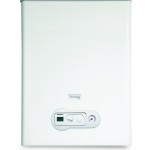
Vokera Verve
Vokera launches high power system boiler
Vokèra is pleased to announce its latest product launch, a new large domestic and light commercial system boiler Verve. The 47kW high-power boiler is designed to offer installers a solution for both large domestic and light commercial boiler applications.
Adding to Vokèra’s comprehensive range of boilers, the Verve offers a 90 per cent efficiency rating and can lead to reduced running costs of up to 35 per cent – making it one of the greenest high-power domestic boilers on the market.
Installers will find both the electronic regulation functions and heat engine design very familiar, being similar to those used on standard domestic boilers. The unit itself is also relatively lightweight weighing in at just 39 kilograms, meaning the Verve is easy to handle and easier to fit.
Alister Maclachlan, product director at Vokèra, comments: “We chose to launch the Verve as it offers installers the option to install a high power system boiler that is familiar in design to that of our domestic range, enabling them to expand their scope of work into larger domestic properties or small commercial premises.
The Verve boiler is supplied with an 80+80mm flue configuration enabling the flue to run up to 20m, or the flue can be re-configured with an optional flue adaptor to a 60/100mm or 80/125mm flue configuration. The Verve is supplied with isolating valves, enabling the boiler to be isolated from the system, which is extremely useful on larger systems, where to drain and refill the system could take several hours.
Vokèra also offer a range of options to accompany the Verve, including the highly recommended hydraulic separator, which ensures the appliance is isolated from any changes in the hydraulic flow rate. Also available is the three port valve which helps to speed up installation.
For more information on the Verve boiler click here









